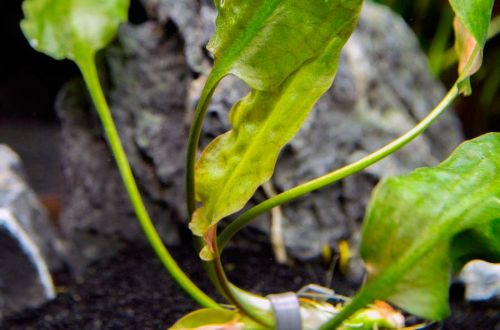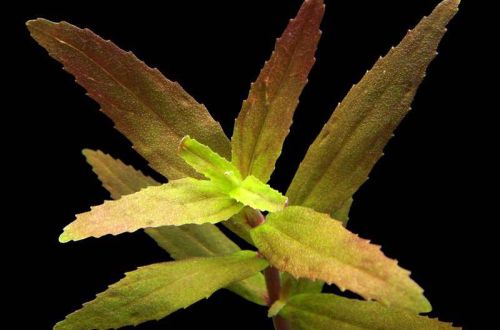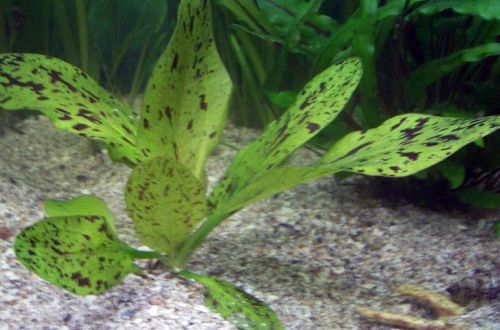
Cryptocorina ciliata
Cryptocoryne ciliata or Cryptocoryne ciliata, scientific name Cryptocoryne ciliata. Widespread in coastal areas of tropical Asia. It grows mainly in estuaries among mangroves – in the transition zone between fresh and sea water. The habitat is subject to regular changes associated with the tides, so the plant has adapted to grow both completely submerged in water and on land. This type of Cryptocoryne is extremely unpretentious, it can be seen even in heavily polluted water bodies, such as ditches and irrigation canals.

The plant grows up to 90 cm, forming a large bush with spreading green leaves collected in a rosette – they grow from one center, without a stem. The lanceolate leaf blade is attached to a long petiole. The leaves are hard to the touch, break when pressed. During flowering, a single red flower appears per bush. It reaches an impressive size and acquires far from the most beautiful appearance. The flower has small shoots along the edges, for which the plant received one of its names – “ciliated”.
There are two forms of this plant, differing in the place of formation of new shoots. The variety Cryptocoryne ciliata var. Ciliata forms side shoots that spread horizontally from the mother plant. In the variety Cryptocoryne ciliata var. Latifolia young shoots grow in a rosette of leaves and are easily detached.
Given the wide area of growth, including in dirty water bodies, it becomes obvious that this plant is unpretentious and can grow in almost any environment. Not suitable for small aquariums.





